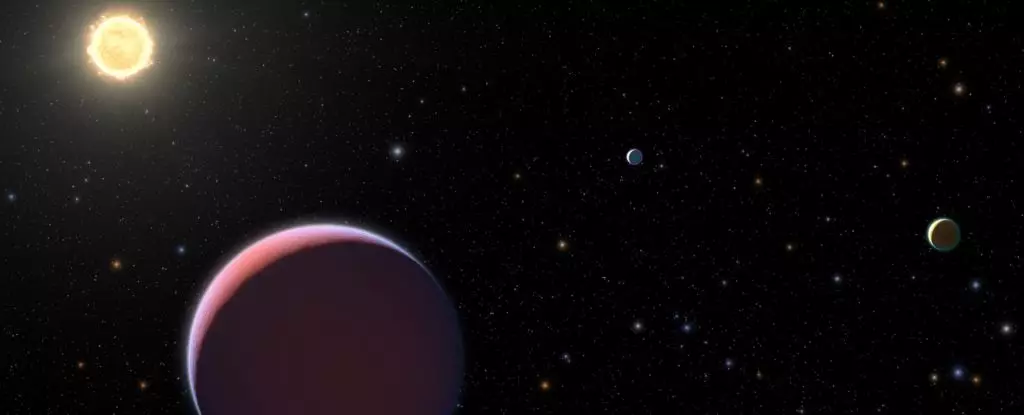Located approximately 2,600 light-years from Earth, the Kepler-51 planetary system stands out as one of the most extraordinary discoveries in modern astronomy. Home to a yellow dwarf star akin to our own Sun, this system has captivated the scientific community since its findings were first published in 2012. Initially, three peculiar exoplanets were identified orbiting Kepler-51, each possessing a unique characteristic that has earned them a rather whimsical designation: super-puff planets. With densities so low they can be compared to cotton candy, the discovery of a fourth exoplanet in this system has sent astronomers into a frenzy of excitement and inquiry.
Super-puff planets represent a fascinating anomaly in the universe. Their rarity often leads scientists to discover them in isolation as standalone entities within their respective systems. Jessica Libby-Roberts, a planetary scientist at Pennsylvania State University, reflects on the challenge presented by the formation of three super-puff planets in one location. With the confirmation of a fourth exoplanet, researchers must grapple with the complexities of establishing a coherent narrative around their genesis. The implications are profound; if a fourth planet exists, is it also a super-puff, or does it present a different array of physical characteristics?
The enigma surrounding Kepler-51 deepens when considering how these planets were discovered to begin with. In 2019, astronomers engaged in detailed observational studies, measuring the radii and masses of the three known exoplanets. Their observations led to surprising insights about the planets’ densities, prompting a closer examination of this unassuming star system. The team’s mission to capture one of the exoplanets during its transit—a moment when the planet moves in front of its host star—should have been straightforward. However, an unexpected delay in measuring the star’s brightness created inconsistencies.
Libby-Roberts and her colleagues initially expected to observe a dip in stellar brightness at a predetermined time, only to realize that the event occurred two hours earlier than anticipated. This anomaly called for an urgent reevaluation of existing data, leading the team to question whether the timing irregularities hinted at the presence of a fourth planet.
Through meticulous analysis of transit timing data from multiple sources, including NASA’s TESS spacecraft and Hubble Space Telescope, astronomers unearthed compelling evidence for the existence of an elusive fourth exoplanet, dubbed Kepler-51e. Co-led by Kento Masuda of Osaka University, the research team employed a ‘brute force’ approach to test a myriad of combinations regarding planetary characteristics to develop a theoretical model encompassing all four planets.
The findings suggest that Kepler-51e may mirror the mass of its three super-puff companions and possess a circular orbit lasting approximately 264 days. Such properties align with the configurations observed in other planetary systems, further heightening the credibility of this exciting hypothesis.
Despite the considerable progress made in understanding the dynamics of the Kepler-51 system, questions remain. As Kepler-51e has yet to be confirmed via transit, its orbital alignment with our perspective could be mismatched, meaning we still lack critical information about its size or density. The presence of even a single additional planet in such a system underscores the peculiarities that make Kepler-51 a focal point for astronomical inquiry.
To unravel the mysteries of these super-puff planets further, researchers plan to explore their atmospheres. By analyzing their chemical compositions and physical properties, astronomers hope to gain insight into the conditions that fostered the formation of these unusual worlds. This investigation is not merely an academic exercise but could fundamentally change our understanding of planetary formation and diversity in the cosmos.
As the saga of Kepler-51 unfolds, it stands as a testament to the wonder of the universe. The complexity of planetary systems like Kepler-51 illustrates the limits of our current knowledge and the infinite possibilities that lie beyond. With each discovery, we take one step closer to elucidating the formation mechanisms of super-puff worlds and planetary systems within the galaxy. The journey of understanding this captivating system has just begun, inviting continued exploration and promising revelations in the field of astronomy.


Leave a Reply